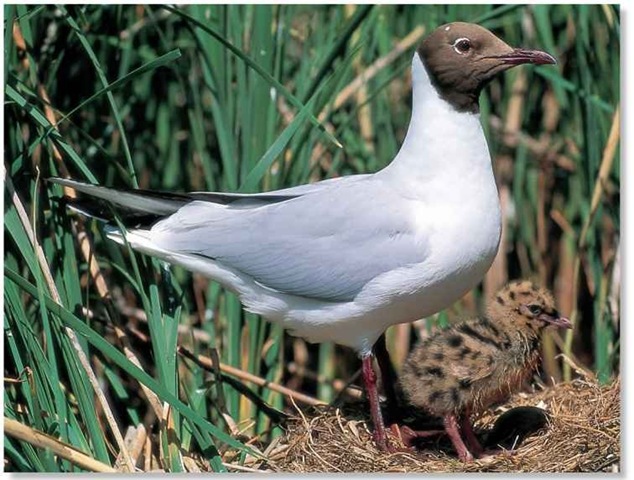ORDER
Charadriiformes
FAMILY
Laridae
GENUS & SPECIES
key features
• Unlike most gulls, spends much of its life inland
• Adapts to man-made environments, nesting on reservoirs and gravel pits, feeding on farmland and scavenging at dumps and parks
• Sexes look identical and raise young together, amid the din of bustling, close-packed colonies
where in the world?
Breeds across Europe and Asia, from Iceland to Russia; some move south in winter to the Middle East, western Africa and eastern North America
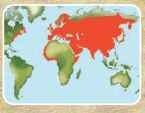
LIFECYCLE
The black-headed gull thrives close to humans, as it has learned to exploit the rich feeding provided by agricultural land, dumps and hand-outs in city-center parks.
HABITAT
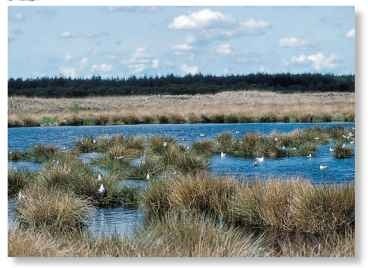
Adaptability is key to the success ^ Easily pleased of the black-headed gull, and the Colonies prefer fljrt only major habitats that it can’t land near water.
exploit at some stage in the year are forests and mountainous areas. Breeding colonies are located on flat lowland areas or upland plateaus near calm and shallow freshwater, such as lakes, reservoirs, gravel pits or slow-moving rivers. It also breeds on both fresh- and saltwater marshes and in reedbeds, as well as on drier sites, from sand dunes to moorland.
Outside the breeding season, the gull flies long distances in search of food. In the north, it moves south in winter. Other populations don’t disperse so far; traveling to sheltered coastal estuaries and man-made habitats, including refuse dumps, sewage plants, gravel pits, farmland, golf courses, parks and even gardens.
CONSERVATION
With a world population of more than three million, the black-headed gull is abundant. It faces no severe threats — the only dangers to nesting birds are flooding, predation of eggs and young by mammals, and egg-harvesting by humans.
BEHAVIOR
The black-headed gull is usually seen in a flock. It appears that families and groups of gulls stay together in flocks of varying size for several years; in fall and spring dispersals, flocks may be several thousand strong.
When it roosts at night, the gull is vulnerable to foxes, weasles and other mammals, so it often chooses a safe place on open water (reservoirs and lakes), using islands and sandbanks. It may fly 12 miles to its roost each evening, collecting at an “assembly point” before the flight.
The black-headed gull uses a series of ritualized displays to communicate with others and to reduce aggression. For example, the male advertises his possession of a nest site by throwing his head back and calling loudly.

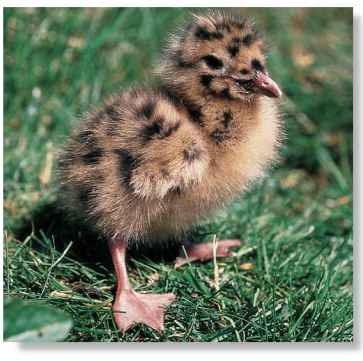
The scientific name of the black-headed gull means “laughing gull,” referring to its rasping, kreeay, call.
# Several species of duck and wading bird build their nests near, or among, black-headed gull colonies. The alert and aggressive gulls act like security guards, noisily driving away predators.
A massive roost of about 100,000 black-headed gulls was counted at one English reservoir on a January night.
Feeding frenzy If one bird discovers food, others quickly join it.
FOOD & FEEDING
The gull varies its diet and feeding habits according to the season and food availability It walks in search of food in short vegetation, such as winter wheat or grazed grassland or wades in shallow water. When it spots an invertebrate or a crustacean, the gull scoops it up, sometimes dashing forward to seize its prey
Skilled in the air, the gull often flies just a few feet above fields or water, dipping to snatch prey from the surface. When there is a hatch of flying insects — typically flying ants — in warm weather; flocks of gulls spiral after them on the rising air currents. They also steal food from smaller birds.
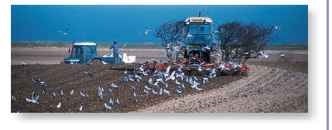
A Rich pickings Plowing exposes a host of invertebrates in the soil.
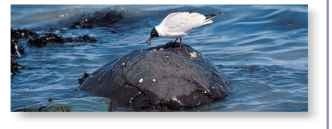
A Anything goes Small fish, frogs and crabs (above) are eaten.
The male and female gulls build their nest together — a simple scrape in the earth to a mound up to 1.5′ high in shallow water that keeps the eggs above water level. Two or three eggs are laid at an interval of two days. Both parents care for their downy chicks, which, like the eggs, are well camouflaged until they fledge after five weeks.
Mottled down
► Equal partners
Camouflage markings hide Both parents incubate the chick on the ground. the eggs for 23—26 days.
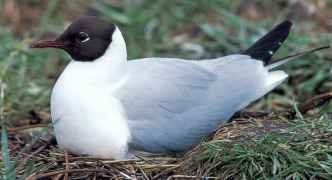
city living

1 Off to town…
Some gulls live near cities all year, commuting to the center to find food dropped in the street…
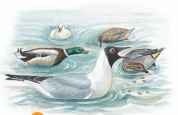
2 Grab a bite…
and visiting parks to feed on bread and other scraps people throw to the tame ducks and geese.
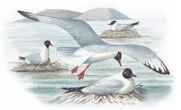
3 Home and dry…
At some gravel pits and recreational lakes, small colonies of gulls nest on man-made floating platforms…
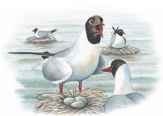
4 Street-wise
…where they have few natural predators.They raise their young without ever leaving the city.
PROFILE
Black-headed Gull
The black-headed gull has a multipurpose body plan. Agile in the air, it’s also nimble on the ground and yet quite at home paddling on the water.
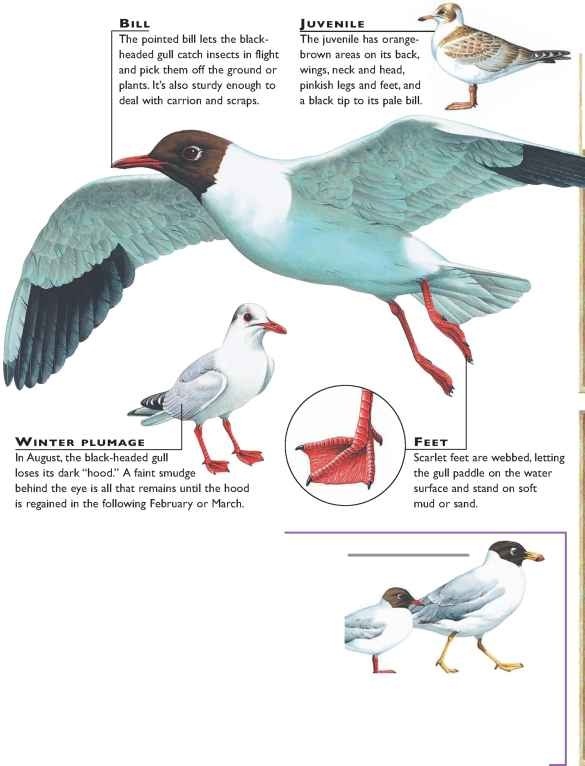
Black-headed gull & Great black-headed gull
CREATURE COMPARISONS
Seen from a distance or in poor light, the black-headed gull’s chocolate-brown head appears blackish, but the great black-headed gull (Larus ichthyaetus) has a truly pure- jjR black head. Both have white ‘eyelids,’ but these are more striking in the larger great black-headed gull. Its bill is yellow and red, with a narrow black band separating the two colors. Its legs and feet are also bright yellow.The great black-headed gull is less common than the black-headed gull, breeding in scattered colonies on coastal marshes and lakes on steppes across central and southern Asia. Unlike the black-headed gull, most migrate to winter on the Caspian Sea and Indian Ocean.
| vital statistics | |
| Weight | 7-13 oz. |
| Length | 1-1.5′ |
| Wingspan | 3-3.3′ |
| Sexual Maturity | 2 years |
| Breeding Season | April-July |
| Number of Eggs | 2-3 |
| Incubation Period | 23-26 days |
| Fledging Period | 35 days |
| Breeding Interval | 1 year |
| Typical Diet | Invertebrates, carrion, small animals; scraps |
| Lifespan | Up to 30 years |
Related species
There are 47 gull species in the family Laridae. Most gulls have pale plumages (gray above and white below),but the ivory gull (Pagophila eburnea) is all-white and Ross’s gull (Rhodostethia rosea) has pink underparts.Gulls live at sea or in wetland habitats and nest in colonies. Relatives include terns in the family Sternidae and skuas in the family Stercorariidae.
